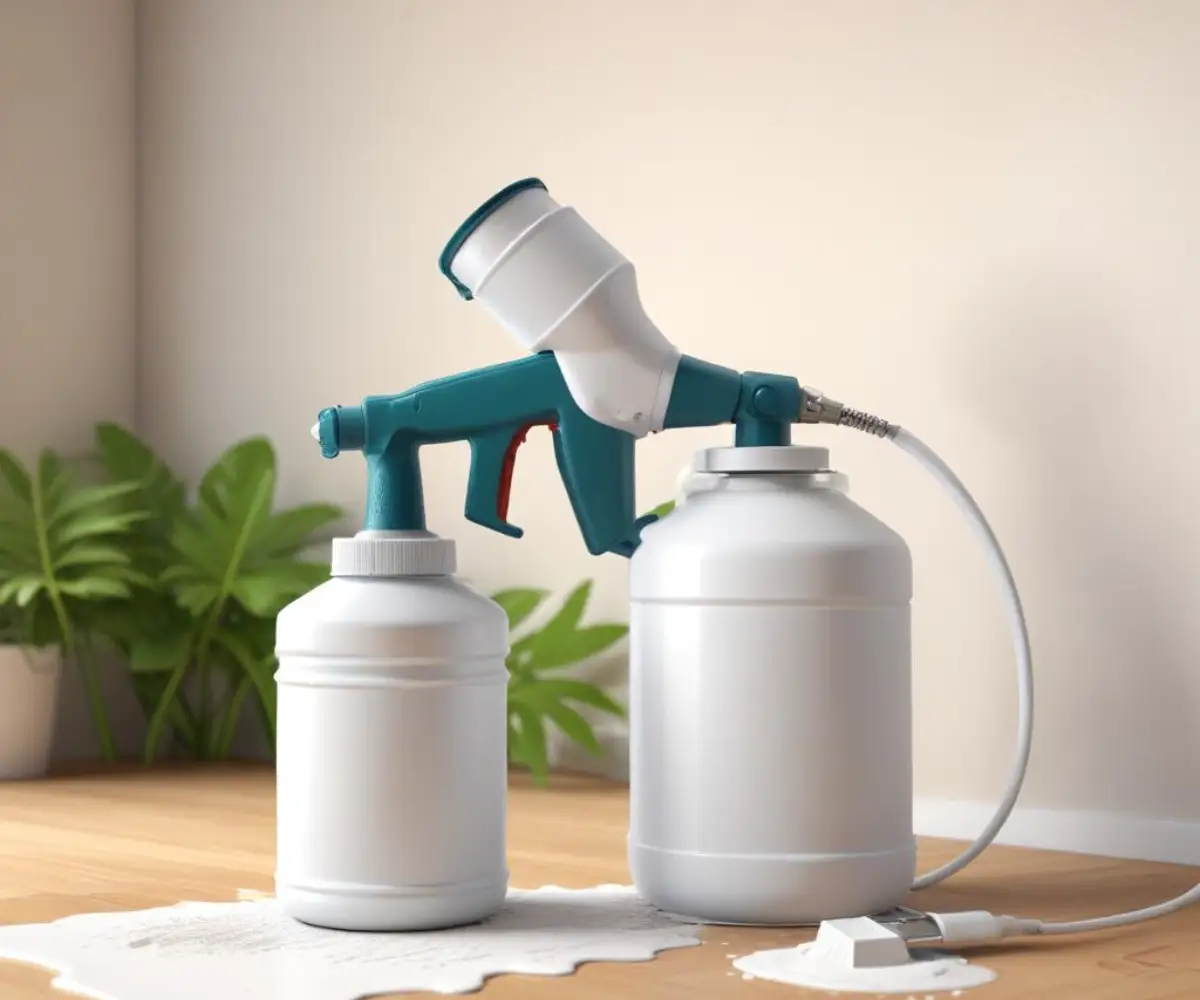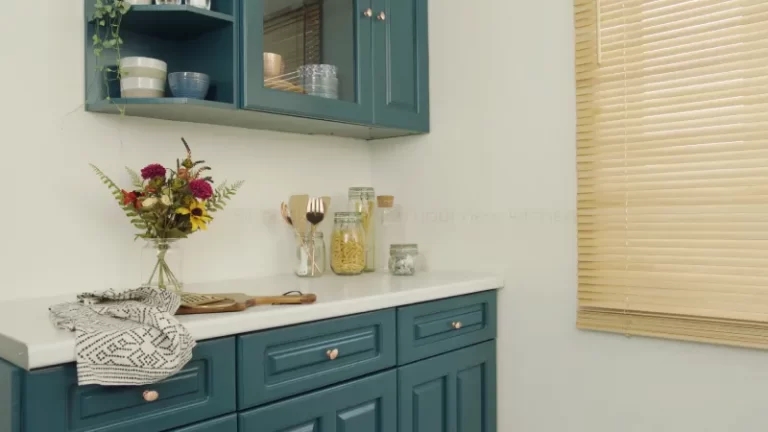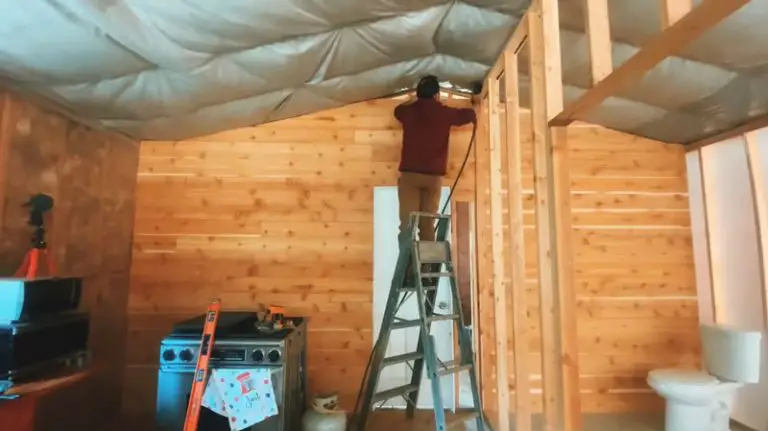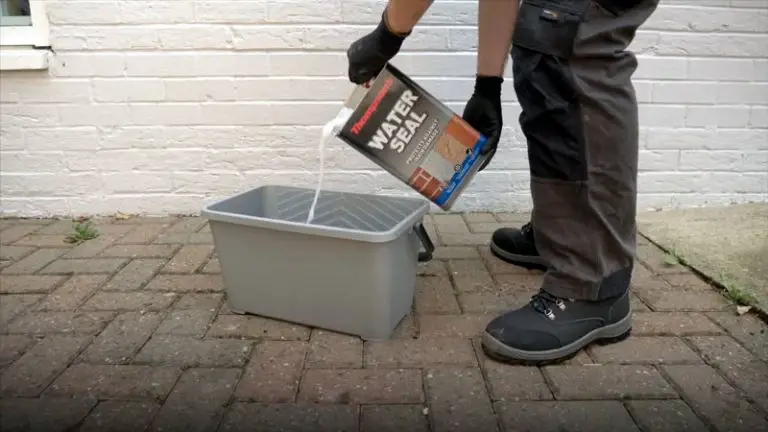Can You Use Kilz in a Sprayer? The Secret to a Flawless Finish
You'll Learn About
The All-Too-Common Problem: When Spraying Kilz Goes Wrong
You have a huge project ahead of you—a new construction, a smoke-damaged room, or a basement in desperate need of a refresh. You know Kilz primer is the answer for tough stains and odors, but the thought of rolling and brushing every square inch is exhausting. The logical next step is to use a paint sprayer for speed and a professional-grade finish.
But this is where the dream often turns into a nightmare. You load your sprayer, pull the trigger, and are met with a sputtering mess, constant clogs, or a finish that looks more like cottage cheese than a smooth, paintable surface. Many DIYers and even some professionals have faced this frustrating scenario, leading them to question if it’s even possible to use Kilz in a sprayer.
The good news is that you absolutely can spray Kilz primer. However, success hinges on understanding the unique properties of the product and meticulously preparing both the primer and your equipment. Failure to do so not only results in a poor finish but can also waste expensive primer and potentially damage your sprayer.
Why Kilz Primer is Different (And Why Your Sprayer Might Hate It)
Kilz has built its reputation on being a heavy-duty, high-performance primer. Its exceptional ability to block stains, seal porous surfaces, and hide imperfections comes from its specific formulation. These primers are packed with a high concentration of solids—the pigments and binders that do the actual work of priming.
This high-solids content results in a thick, viscous liquid. While this is great for coverage with a brush or roller, it’s the number one enemy of a paint sprayer. Sprayers work by atomizing liquid into a fine mist, and they struggle to break down materials that are too thick, leading directly to the clogs and uneven patterns that cause so much frustration.
Furthermore, the Kilz family includes products with different bases: oil-based (like the original), water-based (Kilz 2 and 3), and shellac-based. Each base has a different viscosity and requires a specific solvent for thinning and cleaning. Simply pouring any Kilz product directly from the can into any sprayer is a recipe for failure.
Choosing Your Weapon: The Best Sprayer for Kilz Primer
The type of sprayer you use is one of the most critical factors for success. While you might be tempted to use a small, inexpensive model, heavy-bodied primers like Kilz demand more power and precision. Investing in the right equipment will save you countless hours of frustration.
Airless Sprayers: The Professional’s Choice
For large jobs like priming entire rooms, ceilings, or exterior surfaces, an airless paint sprayer is the undisputed champion. These machines operate by pumping the primer at extremely high pressure (up to 3,000 PSI) through a small spray tip. This immense force is powerful enough to atomize thick materials without significant thinning.
The primary advantage of an airless sprayer is its speed and ability to handle unthinned or minimally thinned Kilz. This preserves the primer’s optimal stain-blocking and sealing characteristics. For most Kilz products, you will want to use a spray tip with an orifice size between .015 and .019 inches for the best balance of coverage and control.
HVLP (High Volume, Low Pressure) Sprayers: For Detail Work
HVLP sprayers are designed for fine-finish applications like cabinets, trim, and furniture. They use a high volume of air at low pressure to deliver a soft, easily controlled spray with minimal overspray. While excellent for paint, they are not naturally suited for heavy primers.
If you intend to use an HVLP sprayer for Kilz, thinning is not optional—it is mandatory. You will need to significantly reduce the primer’s viscosity to allow the sprayer’s turbine to atomize it properly. This makes HVLP a viable choice for smaller projects where a glass-smooth finish is paramount, but it’s less efficient for priming large wall surfaces.
Can You Use a Handheld or Wagner Sprayer?
Many homeowners own handheld airless or Wagner-type sprayers. These can work for spraying Kilz, but with some important caveats. These models typically have less powerful motors and smaller tip allowances than professional-grade airless sprayers.
To succeed with a handheld sprayer, you must choose a sprayable Kilz product (like Kilz 2 or Kilz 3), properly thin it to the consistency of pancake batter, and use the largest spray tip recommended for your device. It is also crucial to strain the primer before pouring it into the sprayer’s reservoir to prevent any small clumps from causing immediate clogs.
The Ultimate Kilz Spraying Guide: Step-by-Step to Perfection
Achieving a professional finish when spraying Kilz is all about a systematic approach. Skipping any of these steps will compromise your results. From choosing the right product to mastering your technique, this is the blueprint for success.
Step 1: Selecting the Right Kilz Product
Not all Kilz primers are created equal when it comes to spray application. Some are naturally thinner and more forgiving, while others are incredibly thick and require more extensive preparation. Understanding the differences is key. For instance, while the original oil-based Kilz offers unparalleled stain blocking, it is also the most challenging to spray due to its thickness and the need for mineral spirits for cleanup.
For a detailed breakdown of which Kilz product is right for your project and how it fares in a sprayer, consult the table below. This “cheat sheet” simplifies the selection process, aligning the product with its intended use and spraying requirements.
| Kilz Primer Product | Base Type | Primary Use Case | Spraying Suitability & Thinning Notes |
|---|---|---|---|
| Kilz Original | Oil-Based | Severe stain and odor blocking (smoke, water) | Challenging. Requires a powerful airless sprayer. Thin with mineral spirits (5-10%) and use a .017-.019 tip. |
| Kilz 2 All-Purpose | Water-Based | General purpose, minor stains, new drywall | Good. One of the easiest to spray. Thin with water (5-10%) for smaller sprayers. Use a .015-.017 tip. |
| Kilz 3 Premium | Water-Based | Excellent adhesion, heavy stains, humidity resistance | Very Good. Sprays well but is thicker than Kilz 2. May require slight thinning with water. Use a .017-.019 tip. |
| Kilz Restoration | Water-Based | Toughest stains and odors (replaces oil-based) | Moderate. Very thick. Requires a strong airless sprayer and a .017-.019 tip. Thinning with water may be necessary. |
| Kilz Mold & Mildew | Water-Based | Bathrooms, basements, and other high-humidity areas | Good. Sprays similarly to Kilz 2. Thin with water as needed for your sprayer model. Use a .015-.017 tip. |
Step 2: The Critical Art of Thinning Kilz
Thinning is the most crucial step for ensuring a smooth, clog-free application, especially with HVLP or handheld sprayers. The goal is to reduce the primer’s viscosity just enough for your sprayer to handle it without compromising its performance. Always consult the product’s technical data sheet first, but here are some general guidelines.
For water-based Kilz products, thin with clean, potable water. Start by adding a small amount—about a quarter-pint (4 oz) of water per gallon of primer—and mix thoroughly with a paddle mixer attached to a drill. For oil-based Kilz, use mineral spirits or paint thinner. Never use water for oil-based products or vice-versa.
A pro-level technique is to use a viscosity cup. Fill the cup with your thinned primer and time how long it takes to empty through the hole at the bottom. Compare this time to the recommended viscosity in your sprayer’s manual to achieve the perfect consistency every time.
Step 3: Setting Up Your Sprayer
Proper sprayer setup is non-negotiable. Before adding any primer, ensure your sprayer is impeccably clean. Any dried paint from a previous job will flake off and instantly clog your tip. Always strain your primer through a mesh strainer bag as you pour it into the sprayer’s reservoir or 5-gallon bucket. This removes any lumps or impurities from the can.
Select the correct tip size for the job. A wider fan (the first number on the tip, multiplied by two) is better for large surfaces like walls, while a narrower fan is suited for trim. The orifice size (the last two numbers) should match the thickness of your material. For most thinned Kilz products, a .015 to .017 tip is a safe bet, while thicker applications may require a .019.
Step 4: Technique for a Flawless Finish
Your application technique will make or break the final result. Hold the sprayer gun perpendicular to the surface, about 10-12 inches away. Moving your arm back and forth, not just flicking your wrist, ensures even coverage. Start your motion before pulling the trigger and release the trigger before you stop moving to prevent heavy spots at the beginning and end of each pass.
Overlap each pass by about 50% to create a uniform coat without visible spray lines. Work in sections, completing one full wall before moving to the next. For highly porous surfaces like new drywall or wood, a second coat may be necessary after the first has dried completely.

Troubleshooting Common Kilz Spraying Nightmares
Even with perfect preparation, issues can arise. Knowing how to quickly diagnose and fix common problems will keep your project on track and prevent major setbacks. Most issues can be traced back to one of three areas: the primer’s consistency, the sprayer’s settings, or your application technique.
Problem: Constant Clogging
A constantly clogging tip is the most frequent complaint. The first culprit is almost always inadequate thinning. If the primer is too thick, it simply can’t pass through the small orifice. The solution is to add a bit more of the appropriate thinner (water or mineral spirits) and mix again.
If you’re confident the viscosity is correct, check for debris. Did you strain the primer? Is your sprayer clean? A tiny, hardened flake of old paint is all it takes to cause a blockage. Many spray tips are reversible, allowing you to quickly “blow out” a clog by turning the tip 180 degrees, spraying onto a piece of cardboard, and then turning it back.
Problem: Runs, Drips, and Sags
Seeing your freshly applied primer start to run down the wall is disheartening. This is a clear sign that you are applying too much material too quickly. This can happen if you move the sprayer too slowly across the surface or hold it too close to the wall.
Another cause can be over-thinning the primer. If the viscosity is too low, it will behave more like water and won’t adhere properly. To fix runs, you must act quickly. Use a brush or roller to gently smooth out the excess primer before it begins to dry.
Problem: “Orange Peel” or Uneven Texture
An “orange peel” texture is a stippled, bumpy surface instead of a smooth one. This often occurs when the sprayer isn’t atomizing the primer correctly. The most common cause is having the pressure setting on your airless sprayer set too low. Increase the pressure in small increments until the spray pattern is even and smooth.
Holding the sprayer too far from the surface can also cause this issue. By the time the primer particles reach the wall, they have already started to dry, preventing them from leveling out into a smooth film. Ensure you maintain that consistent 10-12 inch distance for optimal results.
The Most Overlooked Step: Sprayer Cleanup
You’ve finished priming, and the results look great. It’s tempting to put your feet up, but immediate and thorough cleaning is absolutely essential. Kilz, especially the oil-based and shellac-based versions, dries quickly and hardens inside your sprayer’s pump, hose, and gun, causing permanent damage.
For water-based primers, run clean water through the system until it comes out completely clear. Start with a bucket of soapy water, followed by a bucket of clean water for a final rinse. For oil-based primers, you must use mineral spirits. This is a more involved and expensive process, so be prepared with at least two gallons of spirits for a full cleaning cycle.
Once the system is flushed, clean the gun, tip, and filters separately with a soft brush. For long-term storage, it’s wise to run a storage fluid like Pump Armor through the system. This prevents corrosion and keeps the internal seals lubricated and ready for your next project.
Kilz vs. Other Primers: When to Choose an Alternative
While Kilz is a powerful and versatile primer, it isn’t always the only solution. Certain situations might call for a different type of product with unique characteristics. Understanding these nuances can save you time and ensure the best possible outcome for your project’s specific challenges.
For example, when faced with severely damaged or peeling drywall, a penetrating sealer may be more effective than a high-build primer. A detailed comparison can help you decide in a tough Gardz vs Kilz showdown, as each has its strengths for particular surface problems. Similarly, if you are looking for a substitute for a surface conditioner, exploring a Gardz problem surface sealer alternative could provide a better solution for locking down chalky or unstable surfaces before priming.
Your wall preparation is just as important as the primer you choose. Before you even think about priming, all holes and imperfections must be filled and sanded. When removing old picture hangers, you might be surprised to learn how much weight a thumbtack can hold, but the tiny hole it leaves still needs to be properly patched for a truly professional finish.
Final Verdict: Is Spraying Kilz Worth the Effort?
Spraying Kilz primer is undeniably more complex than using a standard latex paint. It requires more preparation, the right equipment, and a deeper understanding of the material you are working with. The prep work and cleanup are more intensive, and there is a steeper learning curve to mastering the technique.
However, the rewards are often well worth the effort. For large projects, the time saved is immense—what might take days with a roller can often be accomplished in a single afternoon. Furthermore, a sprayer can deliver a smoother, more uniform foundation for your topcoat, free of the brush marks or roller texture that can mar a final finish.
Ultimately, with the correct knowledge and a methodical approach, spraying Kilz primer is not only possible but is the preferred method for professionals seeking efficiency and quality. By respecting the product’s thickness, choosing the right sprayer, and dedicating ample time to preparation and cleanup, you can harness the full power of Kilz for a durable, stain-free, and perfectly primed surface.



